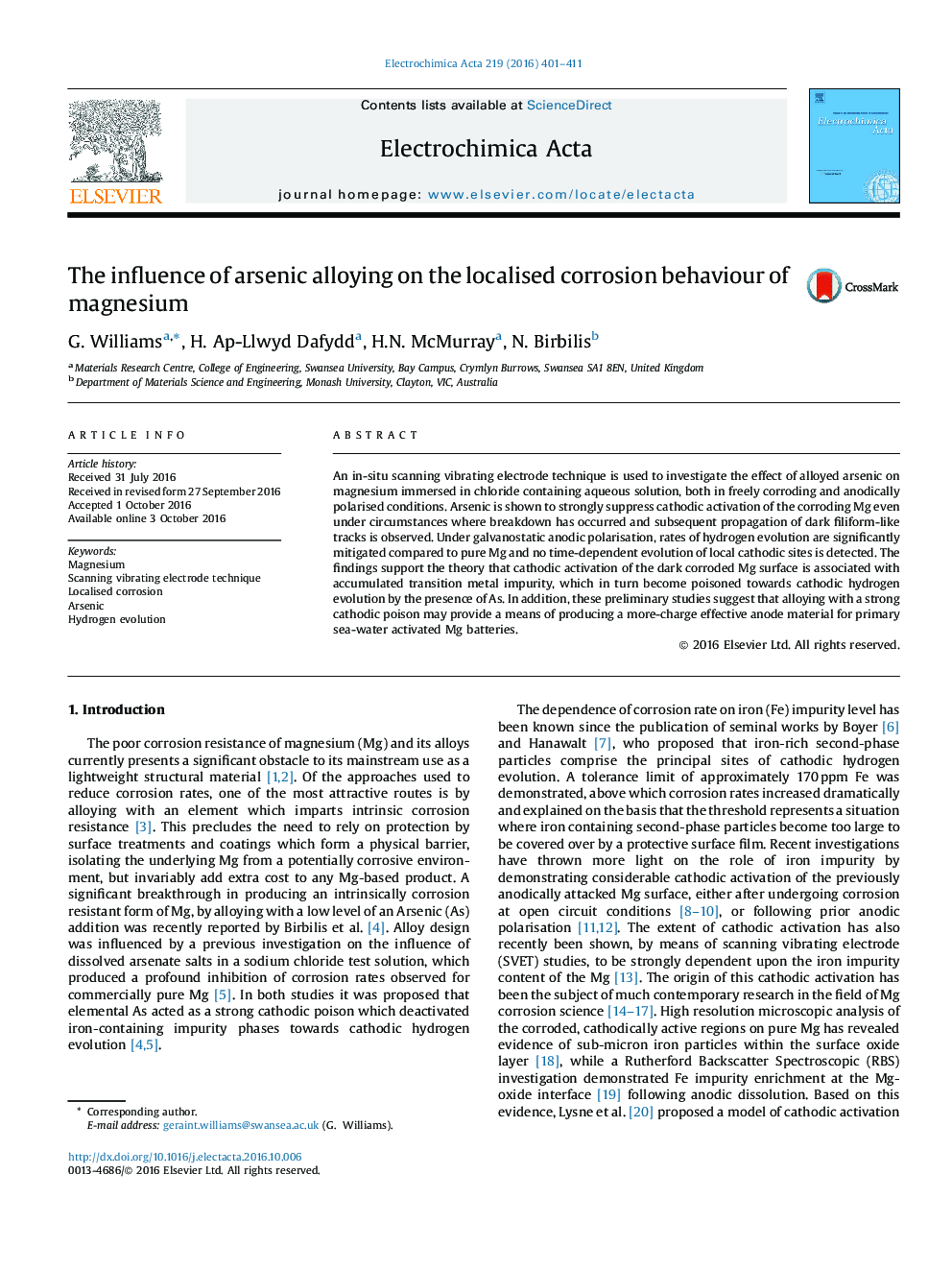| Article ID | Journal | Published Year | Pages | File Type |
|---|---|---|---|---|
| 6472945 | Electrochimica Acta | 2016 | 11 Pages |
An in-situ scanning vibrating electrode technique is used to investigate the effect of alloyed arsenic on magnesium immersed in chloride containing aqueous solution, both in freely corroding and anodically polarised conditions. Arsenic is shown to strongly suppress cathodic activation of the corroding Mg even under circumstances where breakdown has occurred and subsequent propagation of dark filiform-like tracks is observed. Under galvanostatic anodic polarisation, rates of hydrogen evolution are significantly mitigated compared to pure Mg and no time-dependent evolution of local cathodic sites is detected. The findings support the theory that cathodic activation of the dark corroded Mg surface is associated with accumulated transition metal impurity, which in turn become poisoned towards cathodic hydrogen evolution by the presence of As. In addition, these preliminary studies suggest that alloying with a strong cathodic poison may provide a means of producing a more-charge effective anode material for primary sea-water activated Mg batteries.
